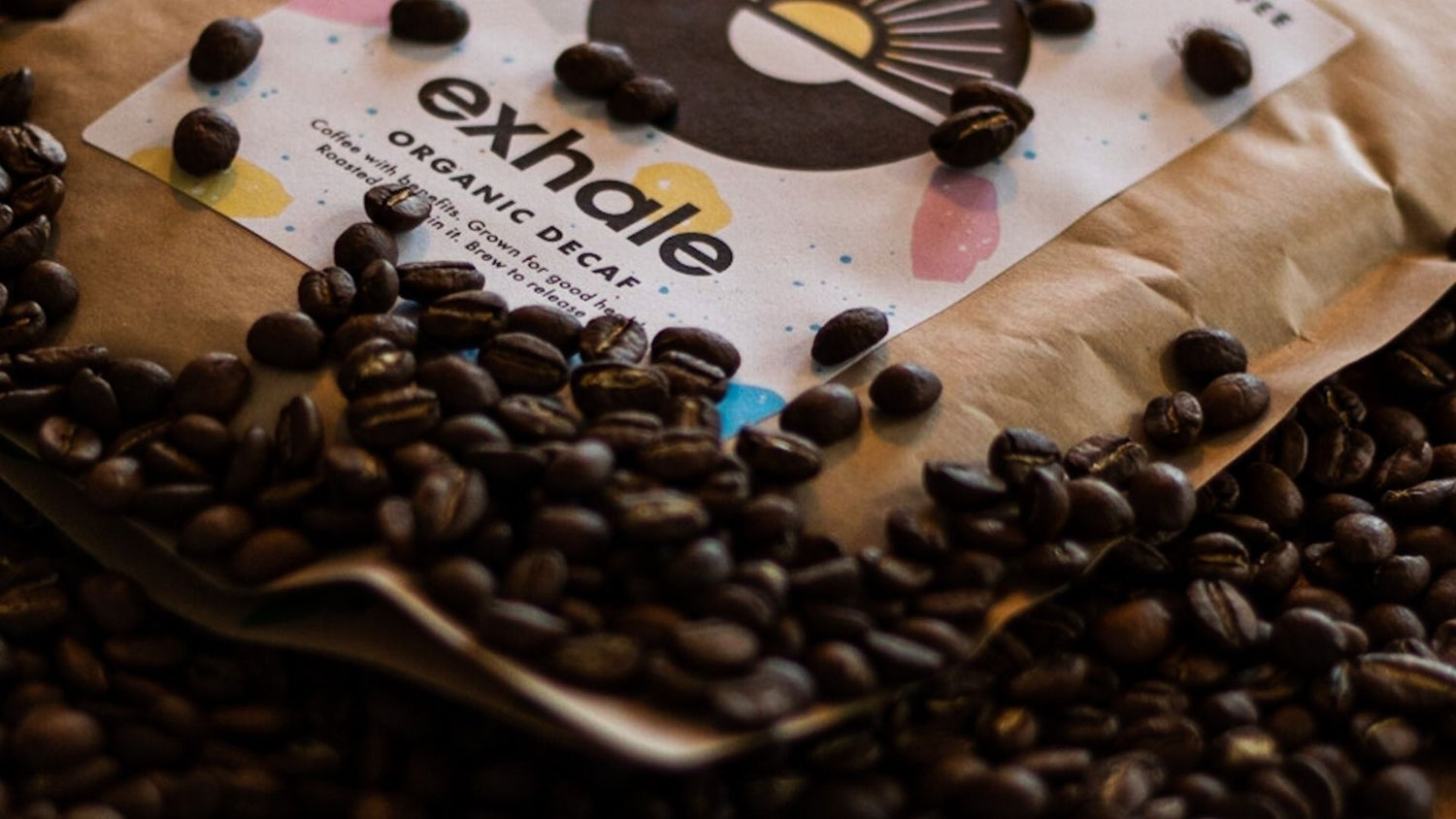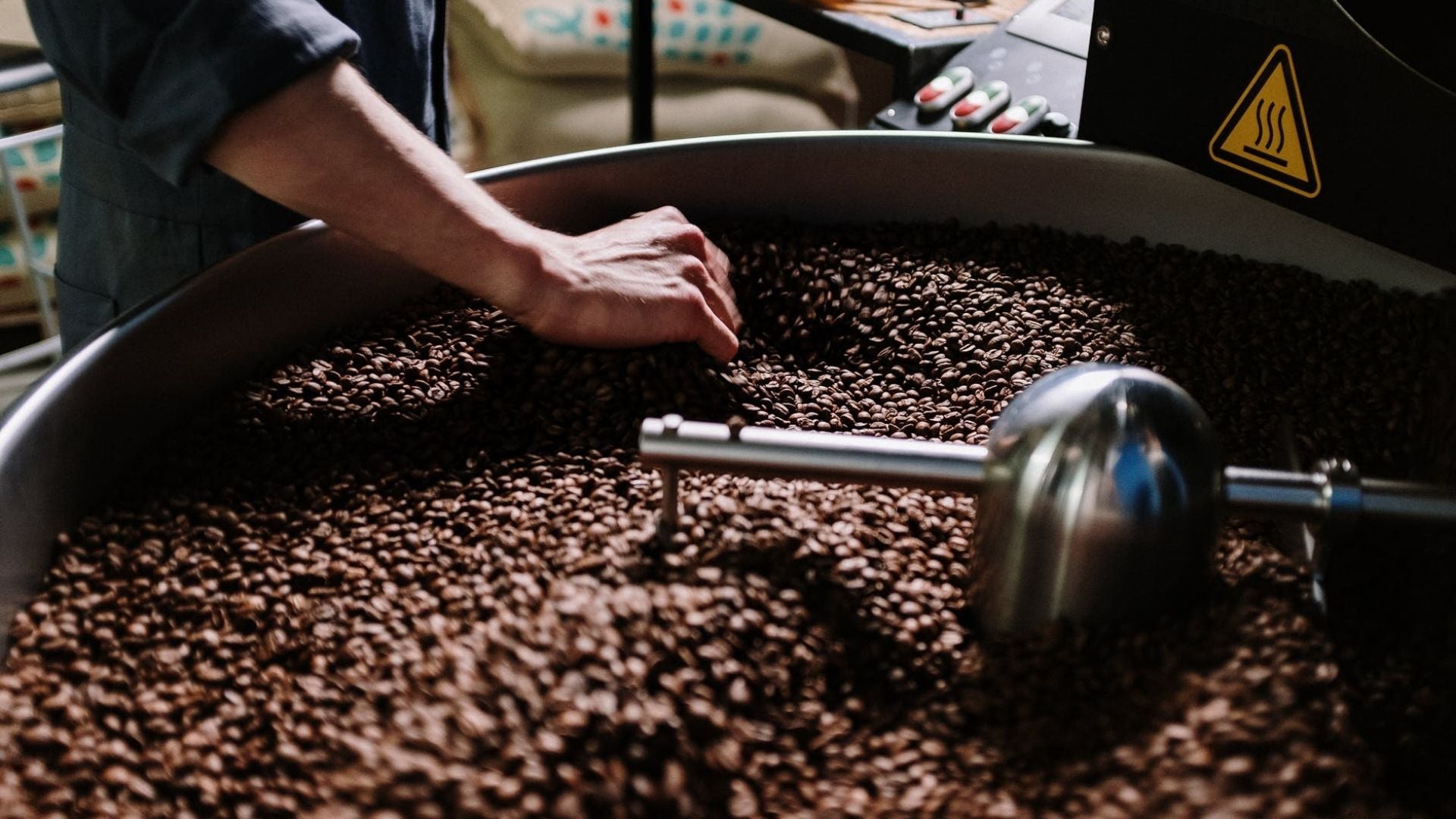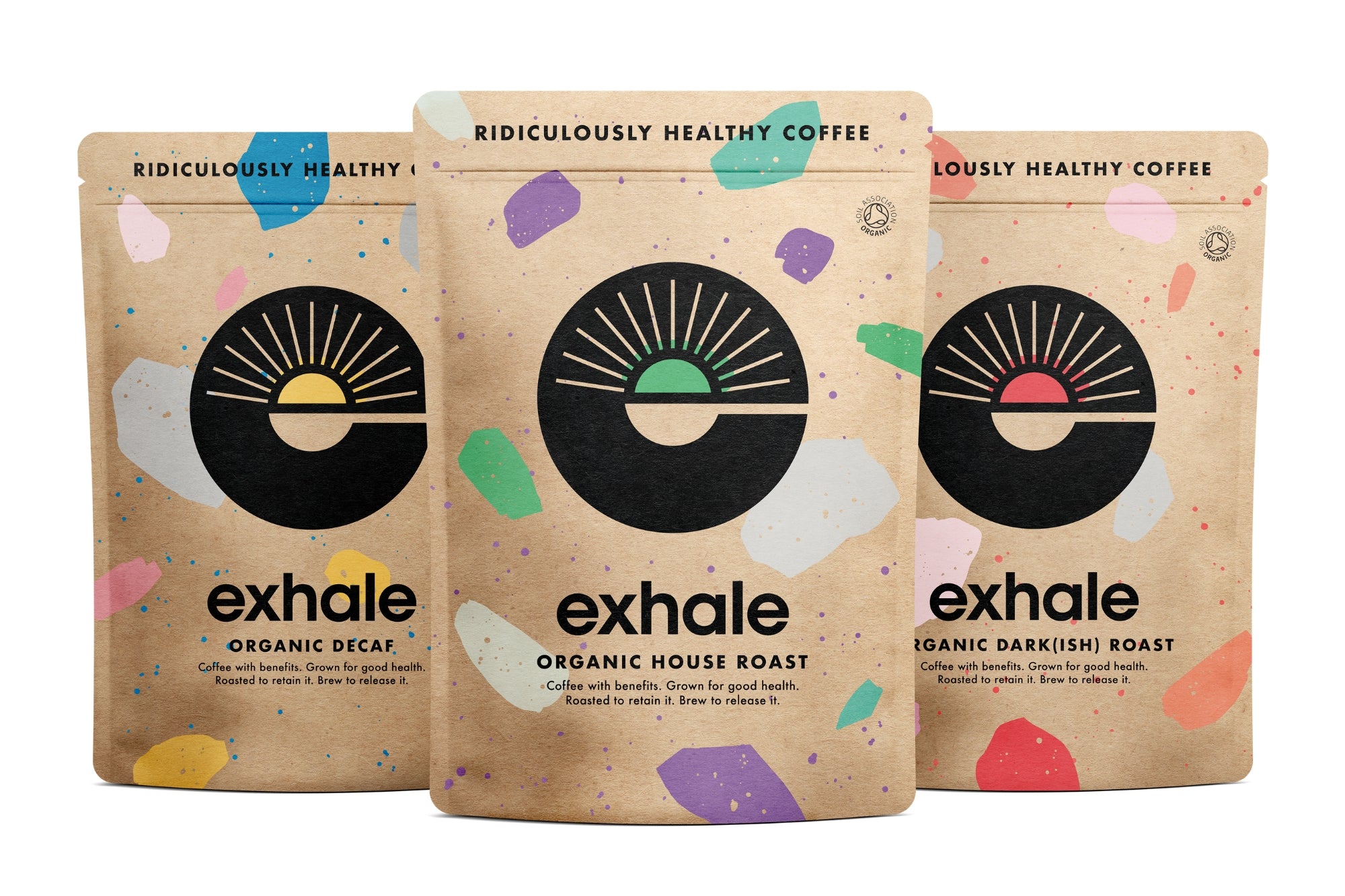Coffee is good for you – according to science.
And of course, as with everything, there are ways to make sure you’re choosing the healthiest coffee out there. Here, Exhale co-founder Al shares his 9 tips for choosing healthy coffee.
- Think freshly roasted. The chlorogenic acid content degrades after roasting by up to 20% per month.
- Freshly ground is also key. If you grind your beans right before brewing you keep all the good stuff in the beans until the last possible minute. And avoid the risk of them getting contaminated or going stale more quickly.
-
Aim for a light or medium roast. Choosing a dark roast means you can lose up to 90% of those health-boosting polyphenols (including chlorogenic acid and other healthy compounds). They're at their highest concentration in the green beans, then as the coffee is roasted the polyphenol content slowly drops as the roast gets darker.

- Dry beans are a good thing. If you see oils on the surface of coffee beans, that’s cafestol and kahweol leaving the beans... never to be seen again. This is important because these fat-soluble nutrients are two of the healthiest compounds in coffee. So, as the oils in coffee get released (as you can see on the shiny surface of dark-roasted beans) they take the cafestol and kahweol with them. Doing you out of valuable nutrients.
- Organic. This is just generally good practice on any fresh produce you’re buying. Organic means that whatever you’re buying is produced using responsible resources, promotes ecological balance, and conserves biodiversity.
- Specialty grade. There are really strict guidelines on whether coffee is or is not considered “specialty grade”. This means the beans have been better looked after, right from the start of their lives. So, they’ll have been grown on a healthier plant, with less risk of contamination during handling and roasted with more care, so less likely to be dark roasted (keeping more nutrients in) —leading to an altogether healthier cup of coffee.
- High altitude. It’s rumoured that for arabica beans, coffee grown at higher altitude may be richer in polyphenols – this could be because of the hormetic response. Just as wine grown in more adverse conditions may contain more resveratrol – a very similar compound to chlorogenic acid in coffee.
- Washed rather than natural. That may sound counterintuitive, but basically with naturally-processed coffees, the coffee berries are left to dry in the sun for several weeks until they shrivel up like raisins. Meaning the UV rays can cause damage to the polyphenols in the coffee beans, resulting in a coffee with much lower polyphenol content in the final cup. The washing process involves removing the skins, and submerging in water to wash off the fruit from the beans, all done in around 24 hours — keeping the nutritional value as intact as possible. It also has a cleaner, more acidic flavour than naturally-processed coffees. All specialty grade coffee will say on the pack how they were processed, so you’ll be able to tell easily if your final brew will have less polyphenols.
- Stuck for where to start? Yeah, it’s a lot. Save yourself the trouble and start right here. Nine-times lab tested baby. We make sure to keep as much of the good stuff as humanly possible, from plant – to cup.





Leave a comment
All comments are moderated before being published.
This site is protected by hCaptcha and the hCaptcha Privacy Policy and Terms of Service apply.